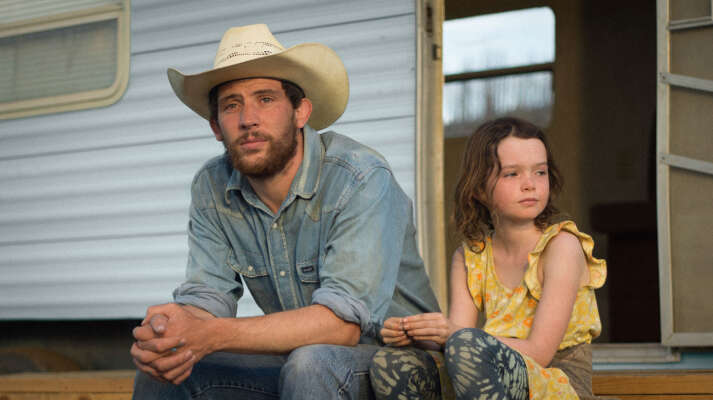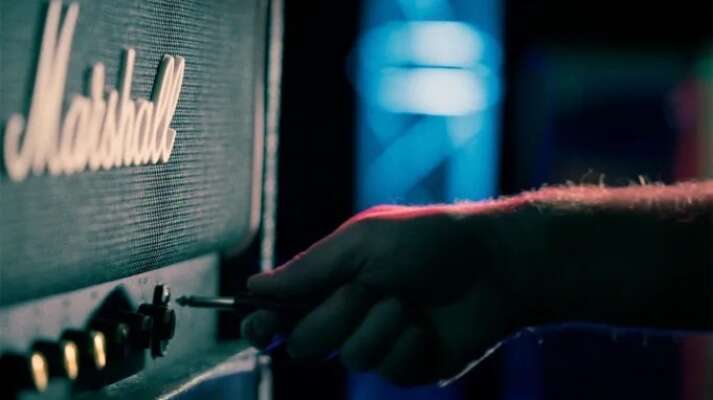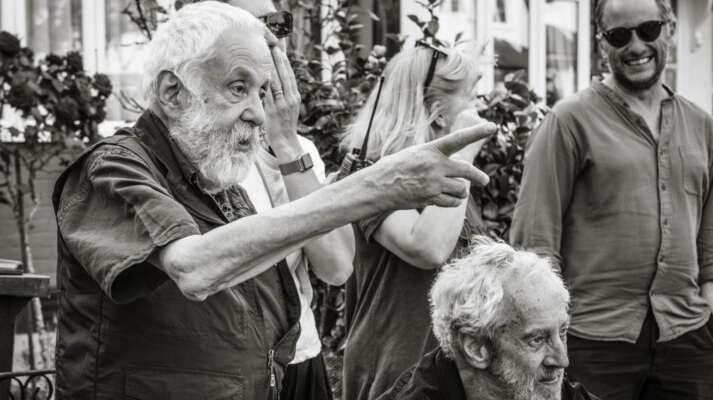Fashion Forward
A Q&A with Colette's costume designer Andrea Flesch
Fashion Forward
Written by Peter Bowen

Set in Belle Époque France, Wash Westmoreland's Colette brings to the screen a remarkable period in the life of the famous artist (Keira Knightley). After moving to Paris from the French countryside when she marries the literary luminary Willy (Dominic West), Colette blossoms. From writing the highly successful Claudine novels to appearing on stage, Colette became one of Paris' most recognizable figures, an iconoclast whose fashion sense showcased her independent spirit. To capture Colette's unique style, as well as the elegant fashions of the period, the filmmakers turned to costume designer Andrea Flesch. Having worked on such period works as Brady Corbet's post World War I drama The Childhood of a Leader and the World War II TV series X Company, Flesch knew exactly how to bring a historical period to life with its costumes.
We spoke with Flesch about her love for the Belle Époque style, how Knightley transformed into the character, and why Colette's fashion sense still matters today.
How did you get involved with the project?
The producers Elizabeth Karlsen and Pamela Koffler were big fans of The Childhood of a Leader and Duke of Burgundy and recommended me to Wash. I was so excited by the whole era that I started to make mood boards before even meeting him. Luckily we shared the same vision from the beginning.
Had you known much about Colette prior to signing on to the film?
I was aware of her works and of her influence on world literature. During the research phase, I collected information about her personality and her life though photos and her writings. I was fascinated by how she was able to always be unique and modern at that time.
You've worked on period stories both in TV and film. Did the Belle Époque period interest you as a costume designer?
Personally, it's one of my favorite eras-it was an exciting, revolutionary period in all fields of art. As a designer, I love the silhouettes of both women and men's fashion in the Belle Époque period as well as the design elements and use of materials during that time. It was a longtime dream of mine to actually work with this period.
What for you was the most creative challenge in designing the costumes for Colette?
When portraying a real person on film whose life has been well documented-in the case of Collette with photos, her novels, and her memoirs-you have to recreate inevitably the significant outfits connected to that person. For the film, we reconstructed many of Colette's most famous original outfits-such as the Egyptian costume she wore on stage [for her headline-making pantomime Dream of Egypt], which was quite revealing and provocative for the time. My overall aim was to find the inner essence of her personality and to portray that with the clothes-outfits that reveal a woman who doesn't care about conventions and knows no boundaries. The film follows different stages of her life, so we built her wardrobe carefully, with each dress-we had 50 outfits in total-capturing a different stage of her life.

What kind of research did you do for the costumes-both for Colette and the other characters?
Since the characters are based on real people, authenticity was important to Wash and me, not only for Colette's character but for Willy's and Missy's costumes as well. During the creative process, I studied a lot of paintings-works by Fernand Toussaint, Edouard Vuillard, Jean Georges Béraud, Vittorio Corcos, James Tissot, and John Singer Sargent. I wanted to recreate the harmony reflected in their paintings. I also studied archival photographs, period dresses, as well as fashion design sketches and dress patterns. In building Colette's character, we focused on the transformation of a young country girl to a Parisian woman. Her wardrobe reflects the way she broke through the strict turn-of-the-century rules of fashion to reveal her real personality. With Willy's costumes, we focused on his changing personality and body shape.
Obviously Colette is a bit of a fashion icon. What do you think Colette's influence on modern fashion has been?

While I wouldn't call her a fashionista, Colette had a great influence on fashion. In some ways her sense of style reminds me of Coco Chanel's. Many of her looks have become quite iconic. Her Egyptian dress, which she wore during one of her most scandalous performances, was photographed and published everywhere. Her Claudine dress, which speaks to Willy's power over her, was immensely influential and popular.
What was it like working with Keira Knightley to create Colette's look?
Keira added so much to the character. She captured both Colette's tomboyish cool and her feminine personality. In developing Colette's look, we decided early on that Keira would not wear a corset. So she developed this unique body language for the character that reflects Colette's attitude towards gender roles and social expectations.

Was there an evolution in the way that Colette dresses through the film?
I created a clean, simple, modern look for Colette's outfits. I used brighter colors (yellows and greys) and lighter fabrics when she was a country girl. As she became a modern Parisian woman, she started wearing darker colors (browns as well as black-and-whites) and heavier fabrics. Because she didn't care about gender roles, I didn't use lace or frills on her dresses. I wanted to keep a clean look with a hint of masculinity that would slowly build to her appearing in a man's suit.
For some of the characters, from Missy to Rachilde, clothes dictate a form of subversion. Can you talk about crafting costumes for those characters?
Since Missy and Rachilde were real people, I started by researching archival photos. Missy was a revolutionary. She outraged many by dressing as a man at the time. For Rachlide, there wasn't a lot of documentation about what she wore. At first, we tried outfits with classical silhouettes and items from the turn of the century. But I wanted her outfits to give her an edge and make her stand out. I found this great kimono for her that captured her modern sensibility.
For a woman working in a creative field in the 21st century, how does Colette inspire you?
She was a free woman who was completely ahead of her time and didn't care about what people thought of her. Her outlook on life reminded me of my aunt (who had a great influence on me and also lived in Paris most of her life). She was a pioneer who always followed her on path. It was very inspiring!
Browse through a selection of photos from Colette below, featuring costumes by Andrea Flesch


